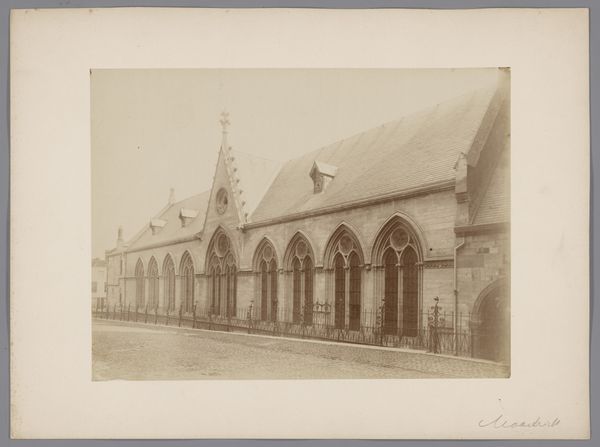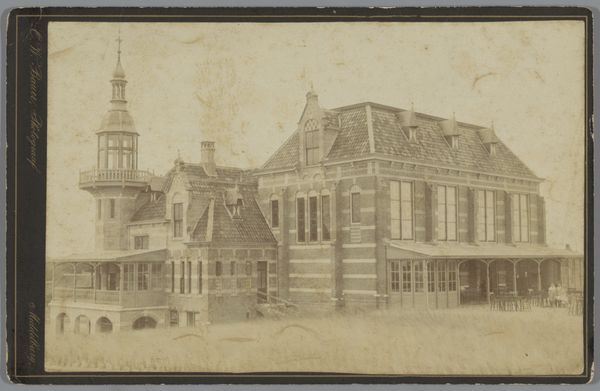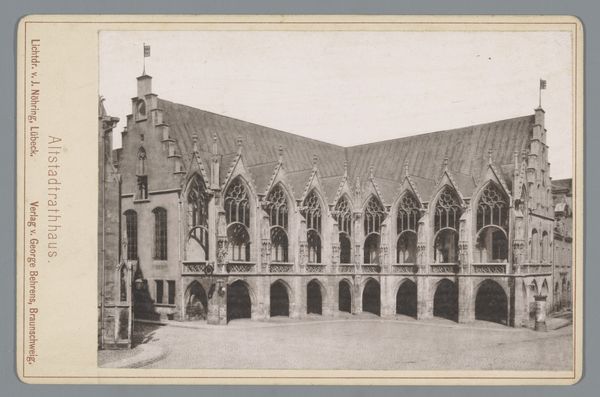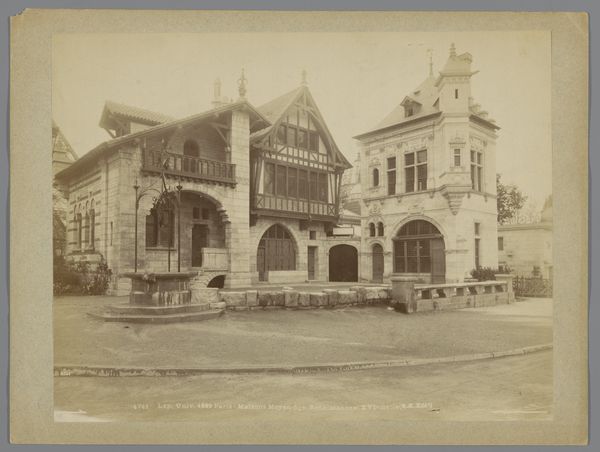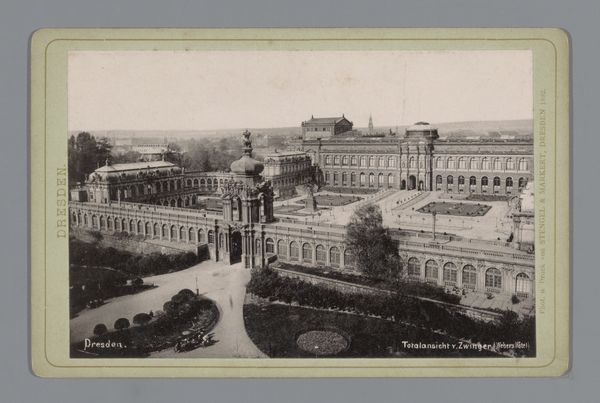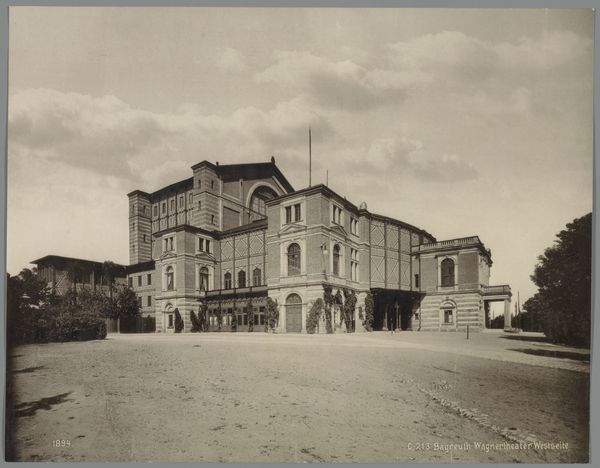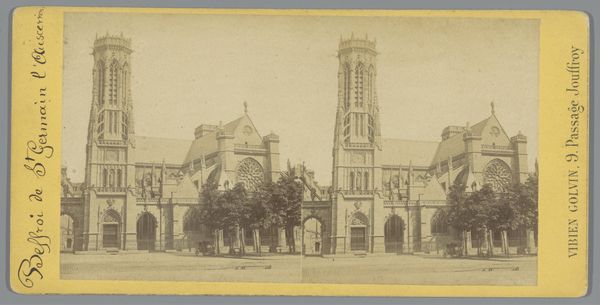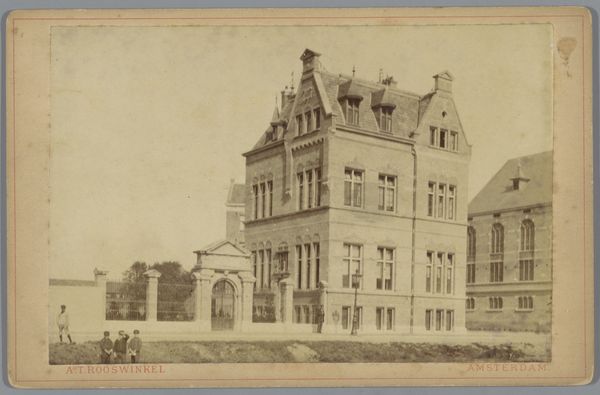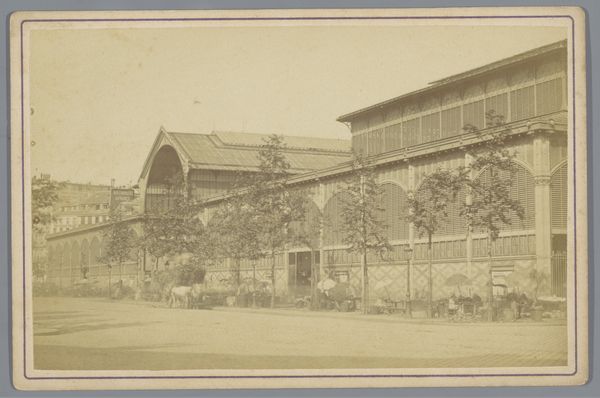
photography, albumen-print, architecture
#
16_19th-century
#
photography
#
19th century
#
cityscape
#
albumen-print
#
architecture
#
realism
Dimensions: height 107 mm, width 166 mm
Copyright: Rijks Museum: Open Domain
Louis Oskar Grienwaldt captured this view of Bremen's train station using photographic techniques. It's not just about the image, but also the chemical processes and the materials he used. Consider the context: photography in this era was a blend of science and artistry, where the alchemical dance of light-sensitive compounds on paper met a rapidly industrializing world. The photograph's sepia tones resulted from the specific chemical developers available at the time. The paper itself, likely a specific type of coated stock, was designed to hold the image with clarity. This wasn't a simple point-and-shoot operation; it involved meticulous preparation, timing, and expertise. Grienwaldt’s choice of vantage point and framing reveal not only the station’s architecture, but also the era’s fascination with progress, speed, and connectivity that this feat of engineering represented. We shouldn't see this image in isolation. It's an artifact deeply embedded in its time, revealing much about the convergence of craft, technology, and the societal changes driven by industry.
Comments
No comments
Be the first to comment and join the conversation on the ultimate creative platform.

